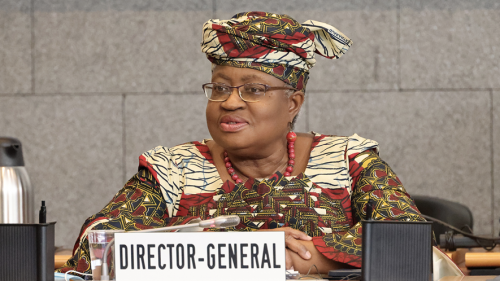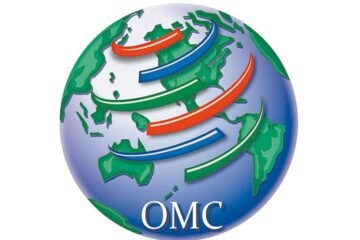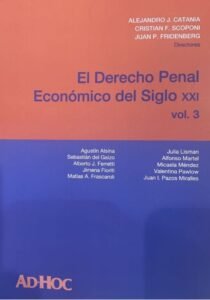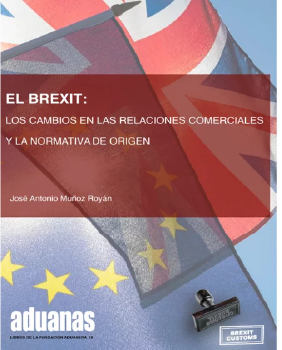OMC – Las medidas de anticipación y las respuestas mensuradas atenúan el impacto de los aranceles en 2025, pero existe riesgo para 2026

Actualmente, se espera un crecimiento del comercio mundial de mercancías del 0,9% en 2025, lo cual supone un incremento respecto de la contracción del -0,2% prevista en abril, pero una disminución frente al 2,7% estimado antes del aumento de los aranceles. Según anunciaron los economistas de la OMC el 8 de agosto en una actualización de sus previsiones, este aumento se debe principalmente a la estrategia de anticipación de las importaciones en los Estados Unidos. Sin embargo, con el tiempo el aumento de los aranceles acabará incidiendo en el comercio, y ha hecho que la tasa de crecimiento del volumen de comercio estimada para el próximo año pase del 2,5% al 1,8%.
A surge of imports in the United States in the first quarter ahead of widely anticipated tariff hikes contributed to the upward revision to the forecast for 2025 issued in the April Global Trade Outlook and Statistics report. Increased tariffs—including those that took effect this week—will dampen trade in the second half of 2025 and in 2026 (see Chart 1 and Table 1).
Director-General Ngozi Okonjo-Iweala said: “Global trade has shown resilience in the face of persistent shocks, including recent tariff hikes. Frontloaded imports and improved macroeconomic conditions have provided a modest lift to the 2025 outlook. However, the full impact of recent tariff measures is still unfolding. The shadow of tariff uncertainty continues to weigh heavily on business confidence, investment and supply chains. Uncertainty remains one of the most disruptive forces in the global trading environment.”
“Nevertheless, it is important that a broader cycle of tit-for-tat retaliation that could be very damaging to global trade has so far been avoided. The WTO Secretariat will continue to monitor developments closely, including further work on the impact of the latest tariff measures on the share of global trade conducted under Most Favoured Nation (MFN) principles. Work will also continue with members to safeguard the stability and predictability so essential to the world’s trading system.”
Asian economies are projected to remain the largest positive driver of world merchandise trade volume growth in 2025, although their contribution in 2026 will be smaller than predicted in April (Chart 1). North America will weigh negatively on global trade growth in both 2025 and 2026, but its negative impact this year will be smaller than previously estimated due to stronger-than-expected frontloading of imports in the US in the first quarter. Meanwhile, Europe’s contribution to trade in 2025 has gone from moderately positive to slightly negative. Other regions, including economies whose exports are largely energy products, will see their positive contribution to trade growth shrink between 2025 and 2026 as lower oil prices reduce export revenues and dampen import demand.
Table 1 summarizes the current outlook for trade by region. North America’s imports are expected to decline by 8.3% in 2025, less than the 9.6% drop foreseen in the April forecast. This positive impact was matched by a stronger-than-expected 4.9% rise in exports of Asia, up from 1.6% in the previous forecast. Europe’s export and import growth this year of -0.9% and 0.4% respectively will be slightly weaker than we predicted in April while North America’s exports will be less negative (‑4.2%).
The -0.2% projected trade contraction for 2025 in the April forecast was based on measures in place at that time (14 April), including the suspension of “reciprocal” tariffs by the United States. Subsequent US agreements with China and the United Kingdom raised the forecast for the year to 0.3%, but higher tariffs on steel and aluminium later brought it back down to 0.1%. The higher tariffs that came into force on 7 August will weigh increasingly on trade, but this will be balanced against positive impacts from frontloading and inventory accumulation, which will have to be unwound at some point. Positive tailwinds have also come from an improved macroeconomic climate, although this is subject to a high degree of uncertainty.
Components of interim updated forecast
On balance, the forecast for merchandise trade growth in 2025 has improved to 0.9%, which can be broken down into two positive factors and one negative one.
First, US imports surged in the first half of 2025, up 11% year-on-year in volume terms, due to frontloading and inventory accumulation. This rise included a sharp 14% quarter-on-quarter increase in Q1 followed by a 16% drop in Q2 (on a seasonally adjusted basis). Moving imports forward to Q1 should result in lower import demand in the future. This correction is expected to come in the second half of 2025, but some will occur only in 2026 and beyond. Hence, this factor will temporarily boost the outlook for 2025 trade. This frontloading factor contributes most to the updated forecast. It is worth noting that a similar, though less extreme, pattern can be seen in imports of other countries, possibly driven by fears of retaliation.
Second, the global macroeconomic outlook is now more favourable than many economists expected back in April. Contributing to the improved climate has been the depreciation of the US dollar against other currencies, which should ease financial conditions for developing economies. Falling oil prices should also support growth in manufacturing economies, although it may simultaneously reduce import demand in oil producing regions.
Third, recent tariff changes are expected to have an overall negative impact on the outlook for global trade compared to the April forecast. This stems from a combination of factors. On the one hand, the US-China truce and exemptions for motor vehicles are contributing positively; on the other hand, higher “reciprocal” tariff rates introduced on 7 August are expected to weigh increasingly on imports in the United States and depress exports of its trading partners in the second half of 2025 and in 2026.
Fuente: OMC





















